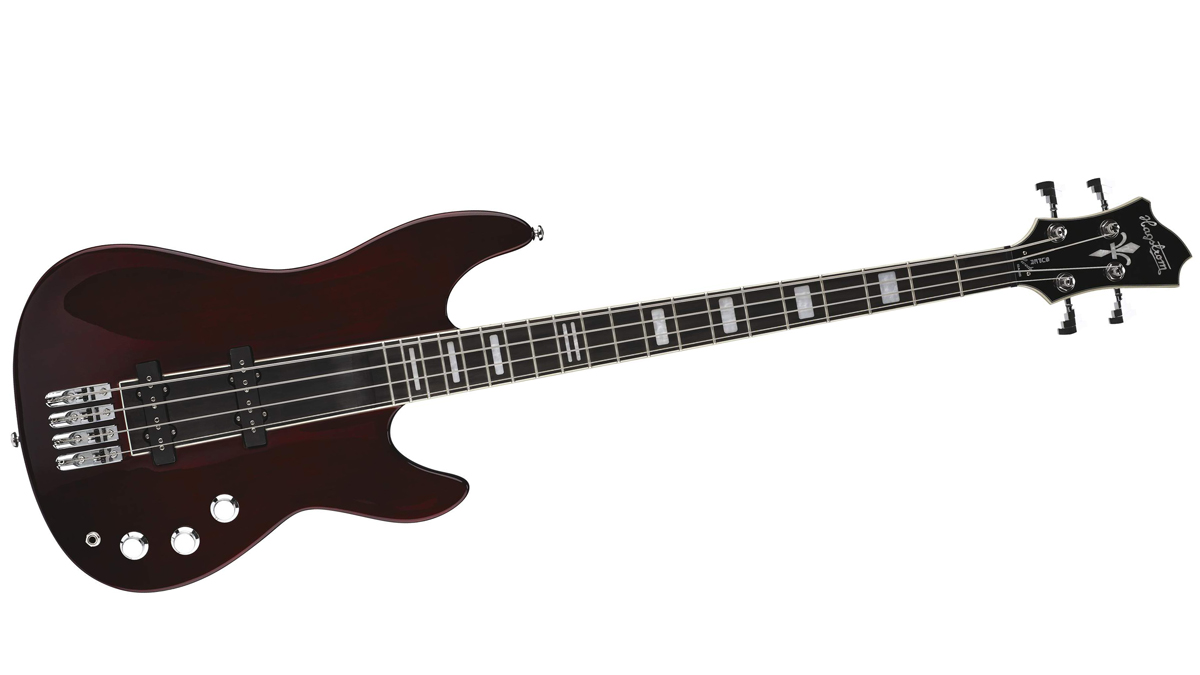MusicRadar Verdict
A grand’s worth of bass that feels like it.
Pros
- +
Solid feel, highly playable.
- +
Classic status.
Cons
- -
It’s pretty trad; modernists may not like it.
MusicRadar's got your back
Swedish luthier Hagstrom made guitars and basses domestically from the 1950s to 1983, before going on hiatus for a couple of decades and then re-emerging as a Chinese-built brand.
One of the last bass models produced in Sweden was the Super Swede, a collaborative design rustled up in 1980 between designer Per-Åke Olsson and the great (and now sadly late) ABBA bassist Rutger Gunnarsson.
If, like so many of us, you’ve dismissed ABBA’s music as throwaway fluff for people of little taste and discernment, you need to think again - if only for the sake of Gunnarsson’s phenomenal bass playing. Seek out ‘Mamma Mia’ if you don’t believe us; yes, the title reeks of tedious rom-coms, but the slinky feel, expert control and creamy tone of that busy line make it essential in our world.
Gunnarsson played the original Super Swede (of which only 364 were made) on ABBA’s final North American tour in September and October 1979, and frankly, we wish we’d been there.
Build
All this leads us neatly to the new, reissued Super Swede, a passive, neck-through, all-mahogany job which you can nab for just over a grand. It’s solid as a rock, reassuringly; a Resinator wood composite fingerboard feels like actual wood, perhaps ebony, and the headstock and those crazy tuners are both massive in that old, we-don’t-care-about-balance way that classic headed bass designs always have. Even the three controls are heavy and turn with palpable authority, if such a thing can be said about a lump of plastic.
The neck has a deep D profile, the frets are medium jumbo (no messing about), the input jack is proudly stuck on the front (where else?) and there are 20 frets (why would you need more?). The design isn’t completely old-school, though; the bridge has modern individual saddles, and the pickups, which initially resemble single-coils, are Hagstrom’s own humbuckers. These are recessed into the centre block, with a long shelf from neck to bridge serving as a flexible thumb rest. We’ve always liked a thumb rest on a bass; after all, we modulate tone with our plucking position, so why not give your thumb some choices about where to sit?
Sounds
By the beards of Bjorn and Benny, the sustain on this bass is nuts. Thanks to the Resinator board and the fact that the strings anchor to that giant centre block without the inconvenience of a bolt-on neck joint to get in the way, your notes sing for ages. Not that massive sustain was necessarily a feature of any ABBA bass part, of course, but it’s still a useful sonic feature to have at your disposal.
Want all the hottest music and gear news, reviews, deals, features and more, direct to your inbox? Sign up here.
The one-volume-per-pickup system deployed here means that you can accidentally switch the bass off if you’re not careful, but unless you’re “herbally refreshed” that shouldn’t be too frequent an occurrence. Roll off the rear pickup and you have a front unit that ranges from muffled to punchy; you’ll need to ease on a bit of the bridge pickup if you want to come close to Gunnarsson’s sound.
Alternatively you can focus on the rear unit completely for a tighter, snappier tone; there’s a reasonable amount of high end if you need it, although you won’t get any of the scintillating treble of modern designs. Employ slap and pop with care, then.
The Super Swede is very playable, we’re pleased to report, despite its relatively chunky neck. You won’t have too much difficulty flying up and down the board, although again, that was hardly Gunnarsson’s main aim. Strength and reliability are clearly at the top of the list of priorities here. Conclusion Thumbs up for the Super Swede from us.
Whether this luxurious (if rather pricey) instrument is for you depends wholly on your taste for classic designs. Tonally and electronically, this is not a progressive bass; it’s there to celebrate the vintage work of a departed legend. If solidity and value for money are on your agenda, give the Super Swede a spin; if you’re after flash, look elsewhere.
